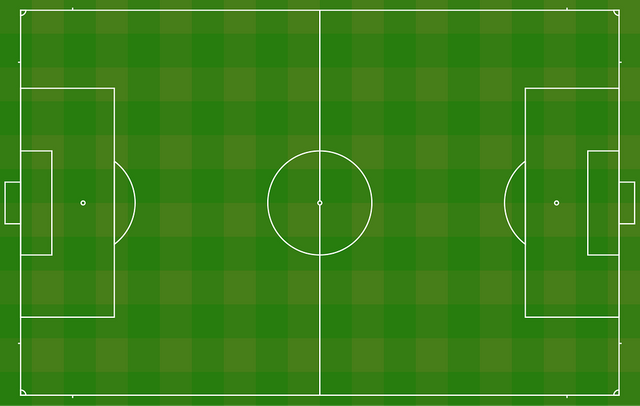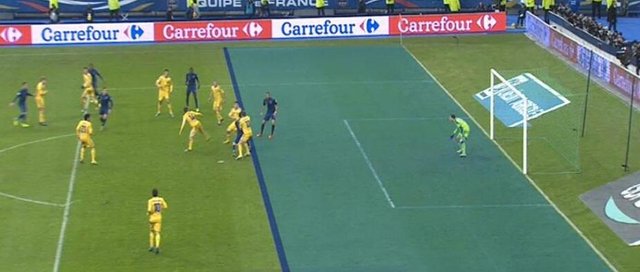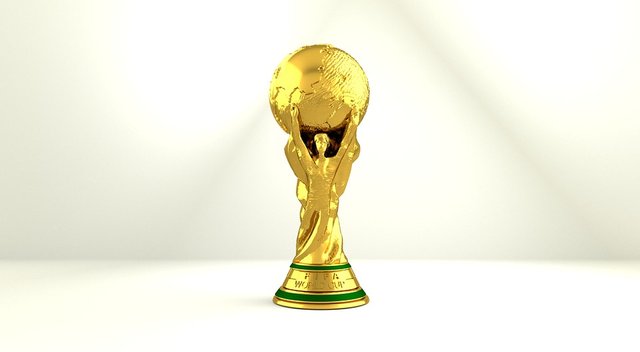Interested to know what rules govern the most popular sports in the world?
During the middle ages (fifth century to fifteenth century), football game got widely favourite in Europe, specially in England. However, there was one trouble that there was no worldwide set of rules to abide by and no one to apply them. Every match finished up with confusion and chaos. These continued into the mid-nineteenth century.
So, in 1860, there organizes an association named Football Association (FA). This Football Association (FA) has outlined the Laws of the Game on 8th December 1863. It's called the Bible of football rules and regulations.
FIFA is an acronym for the Federation Internationale de Football Association or the International Federation of Association Football in English. They outlined a Fair Play Code besides the rules and regulations.

source
GENERAL FACTS OF THE MATCH
The match gets played over two separate halves. One-half lasts 45 mins of normal playing time with a 15 mins interval at half-time. The opponent squad resumes the game with a kick-off taken at the centre of the middle line. Additional playing time is usually added at the referee's discretion for time lost due to injuries and substitutions.
Football Field Description
Dimensions
The standardized lengths of the touch lines and the goal lines are 100 m - 110 m and 64m - 75 m, respectively.
Goal Area
The goal area is the region wrapped by two 5.5 m long lines drawn from the inside of each goalpost, linked by a line parallel to the goal line.
Penalty Area
It's the region enclosed by two 16.5 m long lines drawn from inside of each goalpost, linked by a line parallel to the goal line. The place 11 m away from the midpoint of the goal line, is marked as the penalty point. From the center of the penalty point, an arc is drawn outside the penalty area, with a radius of 9.15 m.
Universal FIFA Rules and Regulations of football game
The ball is in play at entirely times unless the referee stops the game or immediately after a goal. Whenever a team concedes a goal, they resume play with a kick-off from the centre spot. A throw-in resumes play after the ball has completely crossed a touchline. Goal kicks resume play if the whole ball passes over the goal line outside the goalmouth after touching an attacking player.
Corner kicks effect when the whole ball crosses the goal line after making contact with a player from the defending team (if not a goal). Soccer's offside rule ensures there are oppositions between the aggressing player receiving the ball and the goal.
FREE KICKS
A direct free kick is granted whenever a player commits any of these fouls
- Climbs up an opponent, 2. Accuses an opposition, 3. Strikes or attacks to hit an opponent, 4. Kicks or tries to kick an opposition, 5. Slips or attempts to slip an opposition, 6. Pushes an opposition, 7. Holds up an opposition, 8. Undertakes an opposition, 9. Spits at an opposition, 10. Holds the ball deliberately.
The direct free kick leads in a penalty kick if the offence gets involved from a player in their own penalty region.
An indirect free kick is granted if a player commits any of these fouls
- Climbs up an opposition, 2. Prevents the goalkeeper from freeing the ball from his/her hands, 3. Strikes an opposition, 4. Blocks the progress of an opposition, 5. Commits any other unmentioned discourtesy
Throw In
When the possessing team sends the ball outside the touchline, throw-in is granted.
At the time of throw-in, a player must eject the ball with both hands simultaneously. The player should keep both feet firmly set on the ground to avoid a 'foul throw'.
Whenever these circumstances are not met, play gets stopped and issues with a throw-in to the defending team. Players are not allowed for scoring directly from a throw-in.
The Goal Kick in Soccer Regulations
A goal kick is granted when the offensive team sends the ball out of the defensive team’s goal line. Then the ball is dead. At this time defender or goalkeeper may lay the ball anyplace interior to the six-yard goal box to kick the ball back into work.
The Corner Kick
A corner kick is awarded to the offensive team while the defending team sends the ball out of its goal line. The ball is placed inside the corner region and kicked into play by the offensive team. Players may score directly off a corner kick.
OFFSIDE
Most debate goes on among fans is 'Offside'. To be honest, the offside rule is very simple. While passing the ball, if a player of one team goes in front of the parallel line of opposition team defender, then it's considered offside. Simply, a player with an attack can't go ahead of a defender without a ball. Need to cross the defender with the ball, or have to be parallel to or behind the defender while the ball is passed. Otherwise it will be considered offside.
Deliberate and unwanted handball
This is an issue, which will debate among football fans. Everybody knows that there is no rule to apply the hands of the player exclude the goalkeeper inside the D-box. But several times it's seen that a defender has got the ball by hand but the referee is going away to continue the game without any penalty! In this case, it must be realized that it's an unintended handball.
The unintended handball can be in 2 ways. If the hand is attached to the body while defending or if the hand is in the back, it's considered an unwanted handball. Referee can give penalty for all other handball cases.
Advantage Rule
Several times, after the foul, the referee continued to play the game by stretching his hands ahead. It's called 'Advantage'.
When a player is fouled when attacking and afterward the foul, if he or his team is in control, then the referee can apply the Advantage Rule without stopping over the game. Whenever the foul is dangerous to show a yellow card, then the referee can show yellow cards after the ball is out of the game. Advantage Rule won't apply if the foul is dangerous to show a red card, Referee stop the game and show the red card directly.
Fouls and Misconduct
The players are penalized for their fouls and misconduct, by the referee who adjudicates the hardness of the offence.
Yellow Card
A yellow card is a caution to the players which is brought out when a player violates the rules and commits offences like showing dissent through words or activities, coming in or going away the field without the referee's permit, etc.
Red Card
The referee displays red card to a player to show that he's being got away. A red card is brought out for violent conduct, deliberately handling the ball to prevent the opposition team from scoring, usage of offensive language or gestures and when a player commits a misconduct after he has already been displayed the yellow card twice.
The WORLD CUP FOOTBALL TROPHY
However, the team scores more goals they win. If both team score equal goals, the match ended as ties. World Cup (WC) Football is played in every four years.
Enjoy football.



Very good information. invite visit my blog
Downvoting a post can decrease pending rewards and make it less visible. Common reasons:
Submit
Thanks for reading my post. Your comment will make me more influenced to post again. I will try to post more informative article in future.
Downvoting a post can decrease pending rewards and make it less visible. Common reasons:
Submit
✅ @rokonujjaman, I gave you an upvote on your post! Please give me a follow and I will give you a follow in return and possible future votes!
Thank you in advance!
Downvoting a post can decrease pending rewards and make it less visible. Common reasons:
Submit
Thanks for reading my post and vote me. I am trying to increase my article writing capability. Your comment will help me to write more and more. If you want you can add more information on my post in the comment.
Downvoting a post can decrease pending rewards and make it less visible. Common reasons:
Submit